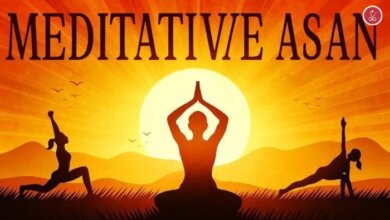Does the Movie Industry Shrink Over Time?
Why Modern Actors Struggle to Evoke the Emotion of the Classic Era

Cinema has always been more than just entertainment. It has been a mirror, capturing human emotions, cultural changes, and the timeless struggles of life. In Hollywood’s golden age, actors built reputations on their ability to move audiences with subtle gestures and deeply studied craft. A glance from Ingrid Bergman or the quiet tension of Marlon Brando could carry more emotional weight than an entire page of dialogue.
But something feels different today. While the movie industry is producing more films than ever before, the depth of performance often seems thinner. Modern films trend for a few weeks on sites like Netflix, Hulu, or Mylixer, then vanish. So, is the industry shrinking in spirit even as it grows in size? To answer that, we need to look at two big forces reshaping cinema: the rise of social media popularity over talent and the way short-form content has rewired audience attention spans.
Popularity Over Talent
Casting in Hollywood has shifted dramatically. No longer is acting skill the sole determinant of who gets a role. Increasingly, it’s about numbers. TheWrap reported that producers and distributors now factor in an actor’s social media following before casting decisions are made. If two actors are equally skilled, the one with the larger follower count often gets the part, because followers can translate into box office or streaming views.
Ethan Hawke criticized this trend in a 2025 CNN interview, calling it “crazy” that producers sometimes require combined follower counts from a cast before approving a project. His frustration highlights the danger of reducing artistry to numbers.
Real-life examples back this up. Elle Fanning admitted she lost a role in a major franchise because she didn’t have enough Instagram followers, despite her strong acting career. Similarly, Maya Hawke has revealed that some projects require actors to meet a combined social media threshold before they can even be funded (New York Post).
This shift from talent to trendiness has diluted the focus on emotional storytelling. Followers now serve as currency in Hollywood, sometimes overshadowing genuine skill.
Audiences Have Changed Too
The problem isn’t just the industry — audiences themselves have changed. In earlier decades, sitting through a two-hour film was normal. Today, many people grow impatient after just minutes without stimulation.
This is more than anecdotal; science confirms it. A 2025 San Diego State University study found that students who scrolled TikTok for just five minutes before reading long articles were significantly less focused. Their eyes darted more rapidly across the text, showing a scanning pattern rather than deep reading.
At UC Irvine, Professor Gloria Mark has tracked attention spans for over 20 years. Her research shows that in 2004, people could focus on a screen task for about 2.5 minutes. Today, that number has dropped to 47 seconds. Even more concerning, it takes about 25 minutes to refocus fully after an interruption.
When audiences consume hours of TikToks, Reels, or YouTube Shorts, their brains become conditioned to expect quick rewards. Sitting through long films with emotional buildups feels harder. Many even multitask during movies, splitting attention between the screen and their phones. That division dulls the impact of performances that demand patience and subtlety.
Streaming and Algorithms
Streaming platforms like Netflix, Hulu, and Myflixer have changed how films are delivered. While they make content more accessible, they also use algorithms that prioritize what is popular right now. Instead of curating timeless stories, platforms often highlight what’s trending or viral.
This creates a cycle. Producers push contt that is easily marketable and fast-paced, because that’s what algorithms reward. Films are designed to go viral but not necessarily to endure. As a result, many modern movies dominate conversation briefly, then fade. Compare that to classics like 12 Angry Men or Casablanca, which remain relevant decades later.
Cultural and Mental Health Effects
The rise of short-form content affects more than entertainment. It shapes thinking and even mental health. A Guardian report on a 2024 study of 1,200 participants found that frequently skipping between videos increased boredom and restlessness rather than relieving it. Instead of satisfying curiosity, short videos made users less patient.
This erosion of patience spills into daily life. Education experts worry that students find it harder to engage with textbooks or lectures. Employers notice workers struggling to sustain focus during tasks. Relationships may even suffer, as constant digital stimulation weakens people’s ability to be present.
Cinema, once a medium that trained audiences to empathize and reflect, risks losing this power. When viewers are conditioned to chase dopamine hits from quick content, films requiring emotional investment become harder to appreciate.
What We Lose Compared to the Classics
Classic films placed enormous value on craft. Directors like Alfred Hitchcock rehearsed scenes dozens of times to capture perfect tension. Actors like Laurence Olivier or Meryl Streep studied voice, gesture, and psychology to embody roles fully. Their performances remain timeless because they were rooted in detail and authenticity.
By contrast, many modern productions are designed to trend. Emotional beats are compressed; scenes move quickly to maintain engagement. This sacrifices nuance. While today’s blockbusters may dominate social feeds, they rarely hold the cultural weight of classics.
Can Cinema Regain Its Soul?
Despite these challenges, cinema is not doomed. There are still directors and actors committed to craft. Martin Scorsese, for example, has been outspoken about Hollywood’s obsession with algorithms, urging filmmakers to focus on artistry instead of metrics. Independent films continue to prove that audiences can and will engage with slow, emotionally layered storytelling — if given the chance.
Audiences have power too. By supporting films that prioritize depth, whether in theaters or on streaming sites like Myflixer, viewers send a signal that substance matters. If Hollywood balances the realities of modern promotion with a commitment to emotional craft, the industry can evolve without losing its soul.
Conclusion
The movie industry has not shrunk in output, but it risks shrinking in depth. Social media metrics, shortened attention spans, and algorithm-driven trends reshape not just who gets cast but how stories are told.
To preserve cinema’s legacy, the industry must once again elevate performance and storytelling over follower counts. And audiences must reward substance over hype. Because long after hashtags fade, what we remember are not numbers but the performances that made us feel.




